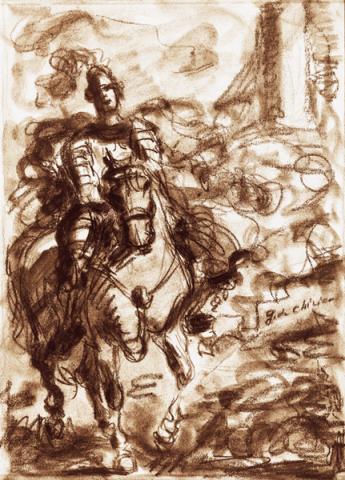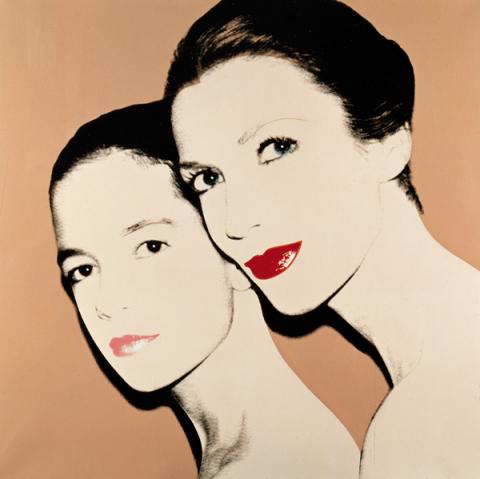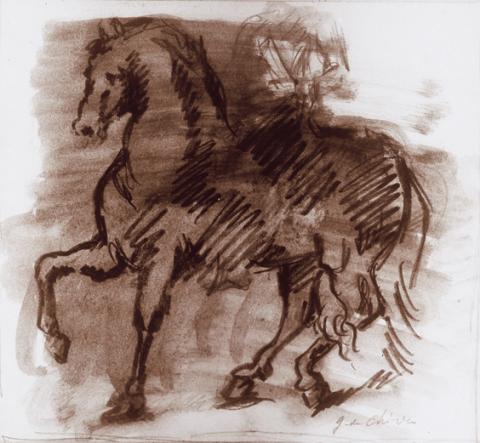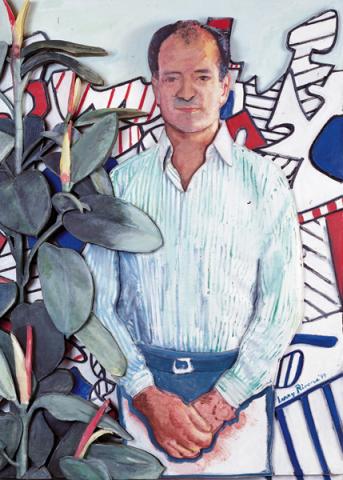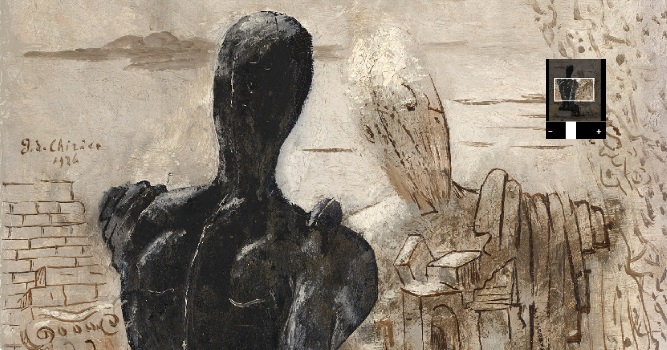The Artists
Damien Hirst. "The Bilotti Paintings": Matteo, Marco, Luca e Giovanni 2004
The fundamental themes of Damien Hirst’s work are science, religion, life and death. Hirst responded to Bilotti’s suggestion with explicit reference to the Sacred Scripture, making a series of large retouched and almost monochrome canvases. His four vertical paintings show, when seen together, a tension which recalls the spirit of Yves Klein and which is driven by the details which in the individual parts of the work are closed in like a secret waiting to be revealed. The most important of these details recalls the first page of the different gospels: Hirst places the opening words on the vertical axes of the frame. A pen is placed in the middle of ever panel, to indicate that there are many sacred pages still waiting to be written. Hirst describes an unknown galaxy onto which with pins he fixes butterflies: their immobility recalls the death which comes to beauty, striking it down: the butterfly which maintains its beauty even in death is a metaphor for immortality. And again, at the bottom left of every single painting, we find a crucifix, two razor blades, two pills, all objects which evoke the obsession with death and corruption. In the minimalist paintings about the detritus of life, he reaffirms a metaphor which is very dear to him, a contrast between art and life, in this case set in a chapel in shadow.
David Salle. "After Michelangelo, The Flood, Creation, The Last Judgment" 2005-2006
Salle takes up Bilotti’s challenge by citing the Sistine Chapel. He shows the themes of the creation, of the flood and the last judgement. He uses a Michelangelo-esque departure as a background, superimposing contemporary images which refer to dramatic events such the tsunami, the Israelo-palestine war, the flooding of New Orleans...
In this way he juxtaposes the truth of the Holy Scriptures with the truth of reporters. It is not the first time that Salle has appropriated fragments of paintings and statues from the past; but contrary to his previous work, in these pieces he allows the Michaelangelo-esque quotation, although dencontextualised, to keep its own original sense. Salle’s work sees in the gathering up of chaos a form of dialectic: their mutual presence involves a dialogue between form and languages, a dialogue between different people, a dialogue between the canvases which make up the diptych a dialogue between the small autonomous canvases inserted into the representation of the central body of the painting, the dialogue between Salle himself and the human universe which lies around him and with which he has a relationship. The concept is that the individual parts, although autonomous, legitimise each other as part of the total function.
Jenny Saville. "Atonement Studies" 2005-2006
If Salle’s works carry the gaze on high and Hirst’s carry it to the height of man, Jenny Saville’s three canvases bring it down to earth. For her, the body is a territory seganto by pain. Rosetta, a young girl blind from birth, a man in a hospital bed and a girl with bloody hands abandoned on a bed, are intended as a study for the theme of redemption. The suffering represented by Saville is a profoundly human suffering, but also a way of moving towards a higher form of spirituality. Her paintings have to do with life, loss and seperation. The essential characteristics of her realism, expressed by violent contrasts of light and broad, rapid brushstrokes, setting light to the emotional and psychological dimension of her subjects. Saville points her finger at the culture which has generated moral behavioural norms and canons of beauty to which the female body is obliged to respond. Demonstrating a sensibility for the tragic which is only equalled in the pictures of the great painters, she shows the body as a devasted landscape, nevertheless proudly tied to life. Illness makes the common denominator of her themes, the premise that hell, as Georges Bataille said, "is the weak idea that God involuntarily gives of ". A God who sees salvation in sacrifice.


























